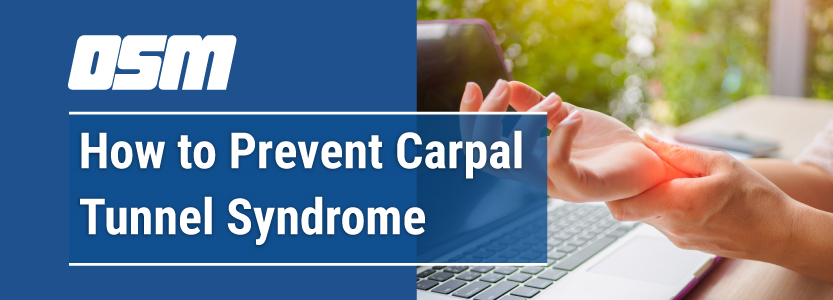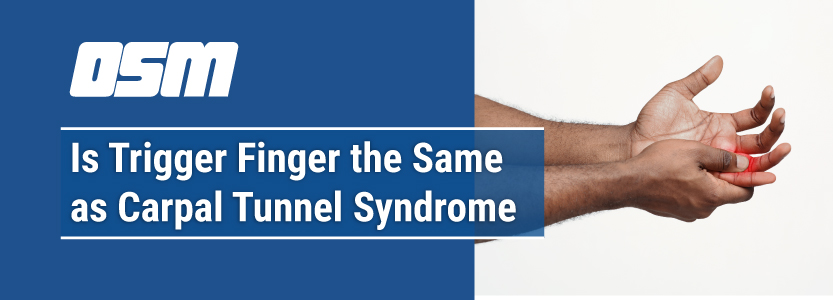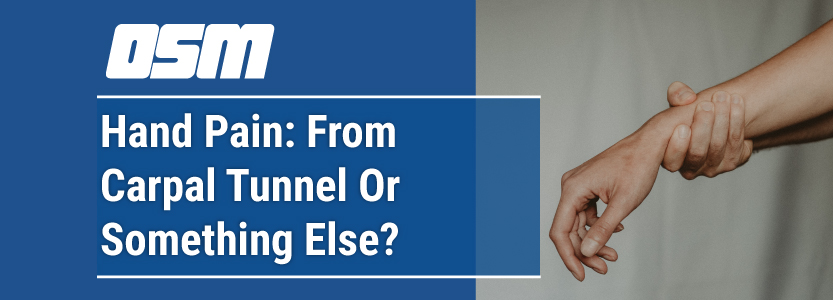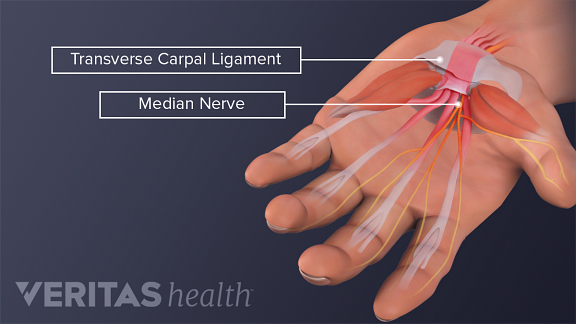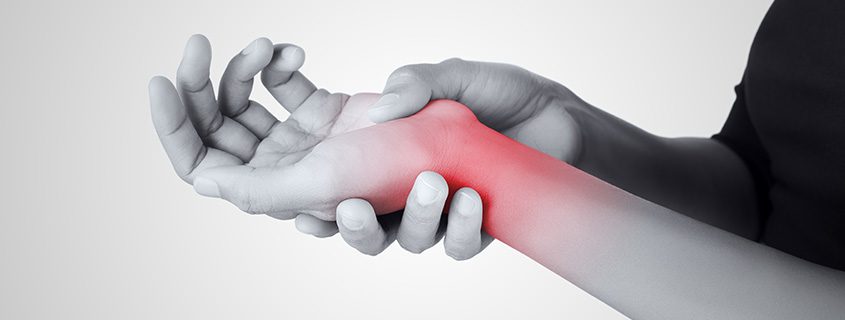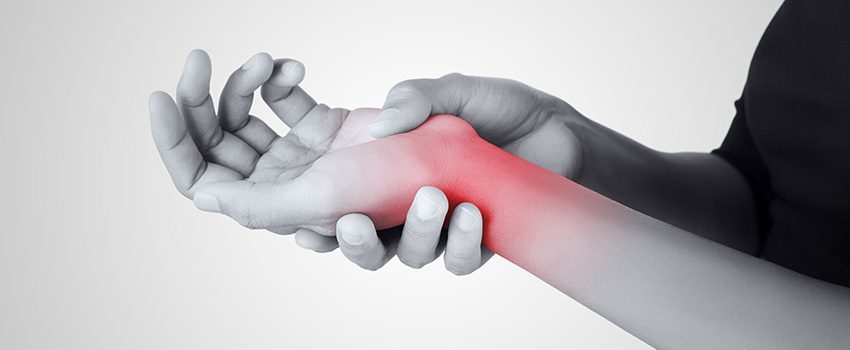Tips on How to Prevent Carpal Tunnel Syndrome
Article featured on Orthopedic Institute of Pennsylvania
Carpal tunnel syndrome (CTS) happens when constant pressure is put on the median nerve. This nerve runs from the forearm through the wrist and provides feeling and sensation to the whole hand — palm, fingers and thumbs.
If you have carpal tunnel, you will notice numbness or tingling in your hand. You may also experience weakness in your affected hand, occasionally dropping items from a loose grip. CTS has no leading cause, as it results from anything that can squeeze or cut off circulation in this nerve.
How to Avoid Carpal Tunnel
Incorporate some of the following methods into your routine to help prevent the development of carpal tunnel. Be sure to talk to your doctor about other options or exercises you can try.
RELAX YOUR GRIP
Sometimes, we don’t notice how tightly we are tensing up our hands until it’s too late. While gripping something, become aware of the strength needed to hold it and don’t overexert. For example, if your work involves typing, hit the keys softly rather than punching them. If you prefer to handwrite, consider using a bigger pen with a soft adapter for easy grip.
STRETCH YOUR FINGERS
It is important to get up and stretch your legs every so often, and do the same for your hands! If you consistently use a computer mouse, ink pen or other office materials, there is likely pressure on your median nerve. Gently stretch and bend your wrists periodically to give them a bit of a hiatus.
IMPROVE YOUR POSTURE
Sitting in a forward hunch harms your back alignment and nerves. Rolling your shoulders forward can shorten your neck and shoulder muscles, compressing the nerves in your forearms. Keep proper posture to maintain healthy nerve function.
Carpal Tunnel Treatments
If you already have carpal tunnel, you can get help from several available treatments. Nonsurgical approaches are usually the first choice, but surgical options are the next resort if the pain worsens.
NONSURGICAL TREATMENT OPTIONS
The Orthopedic Institute of PA offers multiple nonsurgical options for our patients. Physical and occupational therapies are the standard choices. You will walk through a series of exercises and use splints to regain your hand and wrist’s full range of motion.
Additionally, we offer Xiaflex nonsurgical solutions, which are an injection to help improve hand and wrist function.
SURGICAL TREATMENT OPTIONS
Surgical approaches are best for severe carpal tunnel symptoms. We offer:
- Endoscopic carpal tunnel release
- Arthroscopic surgery
- Joint replacement
RECOVERY
Your hands are one of your most used body parts, so they must receive the proper healing time. Full recovery from carpal tunnel treatments can last from weeks to months, depending on the severity of the condition. If surgery is used, physical therapy is a standard follow-up to ensure the procedure went smoothly and the full range of motion is returning.
The Orthopedic & Sports Medicine Center of Oregon is an award-winning, board-certified orthopedic group located in downtown Portland Oregon. We utilize both surgical and nonsurgical means to treat musculoskeletal trauma, spine diseases, foot and ankle conditions, sports injuries, degenerative diseases, infections, tumors and congenital disorders.
Our mission is to return our patients back to pain-free mobility and full strength as quickly and painlessly as possible using both surgical and non-surgical orthopedic procedures.
Our expert physicians provide leading-edge, comprehensive care in the diagnosis and treatment of orthopedic conditions, including total joint replacement and sports medicine. We apply the latest state-of-the-art techniques in order to return our patients to their active lifestyle.
If you’re looking for compassionate, expert orthopedic and podiatric surgeons in Portland Oregon, contact OSM today.
Phone:
Address
1515 NW 18th Ave, 3rd Floor
Portland, OR 97209
Hours
Monday–Friday
8:00am – 4:30pm

